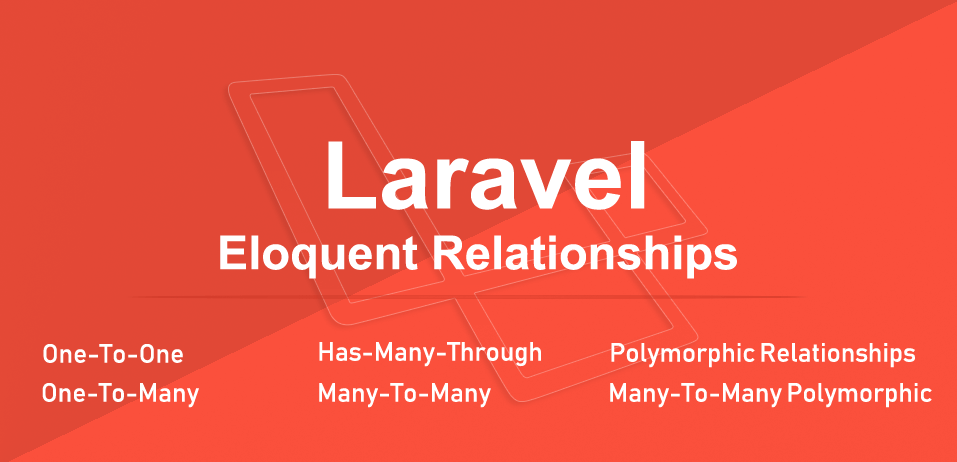Introduction:
In Laravel, Eloquent relationships are the backbone of building dynamic and interconnected applications. Understanding these relationships is crucial for efficient database management and creating maintainable code. In this guide, we’ll delve into the intricacies of Eloquent relationships, covering one-to-one, one-to-many, and many-to-many relationships with practical examples.
Table of Contents:
- Introduction
- Understanding Eloquent Relationships
- 2.1 One-to-One Relationships
- 2.2 One-to-Many Relationships
- 2.3 Many-to-Many Relationships
- Practical Examples
- 3.1 Building a One-to-One Relationship
- 3.2 Implementing a One-to-Many Relationship
- 3.3 Handling Many-to-Many Relationships
- Advanced Techniques
- 4.1 Eager Loading
- 4.2 Polymorphic Relationships
- Best Practices
- 5.1 Naming Conventions
- 5.2 Cascading Deletes
- Conclusion
Understanding Eloquent Relationships:
2.1 One-to-One Relationships:
A one-to-one relationship is established when a model is associated with exactly one record in another model. Let’s consider a scenario where a User has one Profile. In your User model:
// User.php
class User extends Model {
public function profile() {
return $this->hasOne(Profile::class);
}
}
And in your Profile model:
// Profile.php
class Profile extends Model {
public function user() {
return $this->belongsTo(User::class);
}
}
2.2 One-to-Many Relationships:
A one-to-many relationship is used when a model can have many associated records in another model. Suppose a Post can have many Comments:
// Post.php
class Post extends Model {
public function comments() {
return $this->hasMany(Comment::class);
}
}
And in your Comment model:
// Comment.php
class Comment extends Model {
public function post() {
return $this->belongsTo(Post::class);
}
}
2.3 Many-to-Many Relationships:
In a many-to-many relationship, a model can have multiple associations with another model, and vice versa. Let’s consider a Role and User scenario:
// User.php
class User extends Model {
public function roles() {
return $this->belongsToMany(Role::class);
}
}
And in your Role model:
// Role.php
class Role extends Model {
public function users() {
return $this->belongsToMany(User::class);
}
}
Practical Examples:
3.1 Building a One-to-One Relationship:
Let’s create a one-to-one relationship between User and Profile:
- First, ensure you have the necessary migrations for both
usersandprofilestables.
php artisan make:migration create_users_table
php artisan make:migration create_profiles_table
Define the relationships in the respective models.
// User.php
class User extends Model {
public function profile() {
return $this->hasOne(Profile::class);
}
}
// Profile.php
class Profile extends Model {
public function user() {
return $this->belongsTo(User::class);
}
}
Run the migrations:
php artisan migrateNow, you can access a user’s profile with:
$user = User::find(1);
$profile = $user->profile;3.2 Implementing a One-to-Many Relationship:
Let’s extend the example to a one-to-many relationship between Post and Comment:
Set up the migrations:
php artisan make:migration create_posts_table
php artisan make:migration create_comments_tableDefine the relationships in the models:
// Post.php
class Post extends Model {
public function comments() {
return $this->hasMany(Comment::class);
}
}
// Comment.php
class Comment extends Model {
public function post() {
return $this->belongsTo(Post::class);
}
}
Run the migrations:
php artisan migrateNow, you can retrieve a post’s comments like this:
$post = Post::find(1);
$comments = $post->comments;3.3 Handling Many-to-Many Relationships:
Extend the relationships to many-to-many with User and Role:
Create migrations:
php artisan make:migration create_roles_table
php artisan make:migration create_role_user_tableDefine relationships in the models:
// User.php
class User extends Model {
public function roles() {
return $this->belongsToMany(Role::class);
}
}
// Role.php
class Role extends Model {
public function users() {
return $this->belongsToMany(User::class);
}
}
Migrate the tables:
php artisan migrate$user = User::find(1);
$roles = $user->roles;Advanced Techniques:
4.1 Eager Loading:
Eager loading helps optimize queries by fetching the related models in a single query. Let’s consider the eager loading of comments with a post:
// Controller
$post = Post::with('comments')->find(1);4.2 Polymorphic Relationships:
Polymorphic relationships allow a model to belong to multiple other models on a single association. Consider a Comment model that can belong to both a Post and a Video:
// Comment.php
class Comment extends Model {
public function commentable() {
return $this->morphTo();
}
}
Now, a comment can belong to either a post or a video.
Best Practices:
5.1 Naming Conventions:
Follow Laravel’s naming conventions to ensure clarity in your code. For instance, use singular names for one-to-one relationships and plural names for one-to-many relationships.
5.2 Cascading Deletes:
Consider using cascading deletes when a record in the parent table is deleted. This ensures associated records in related tables are also deleted.
Conclusion:
Mastering Laravel Eloquent relationships is a pivotal skill for building robust applications. Whether you’re working on simple one-to-one associations or complex many-to-many relationships, understanding these concepts empowers you to create efficient, scalable, and maintainable code. Experiment with different relationship types in your Laravel projects, and don’t hesitate to explore advanced techniques to optimize your application.

